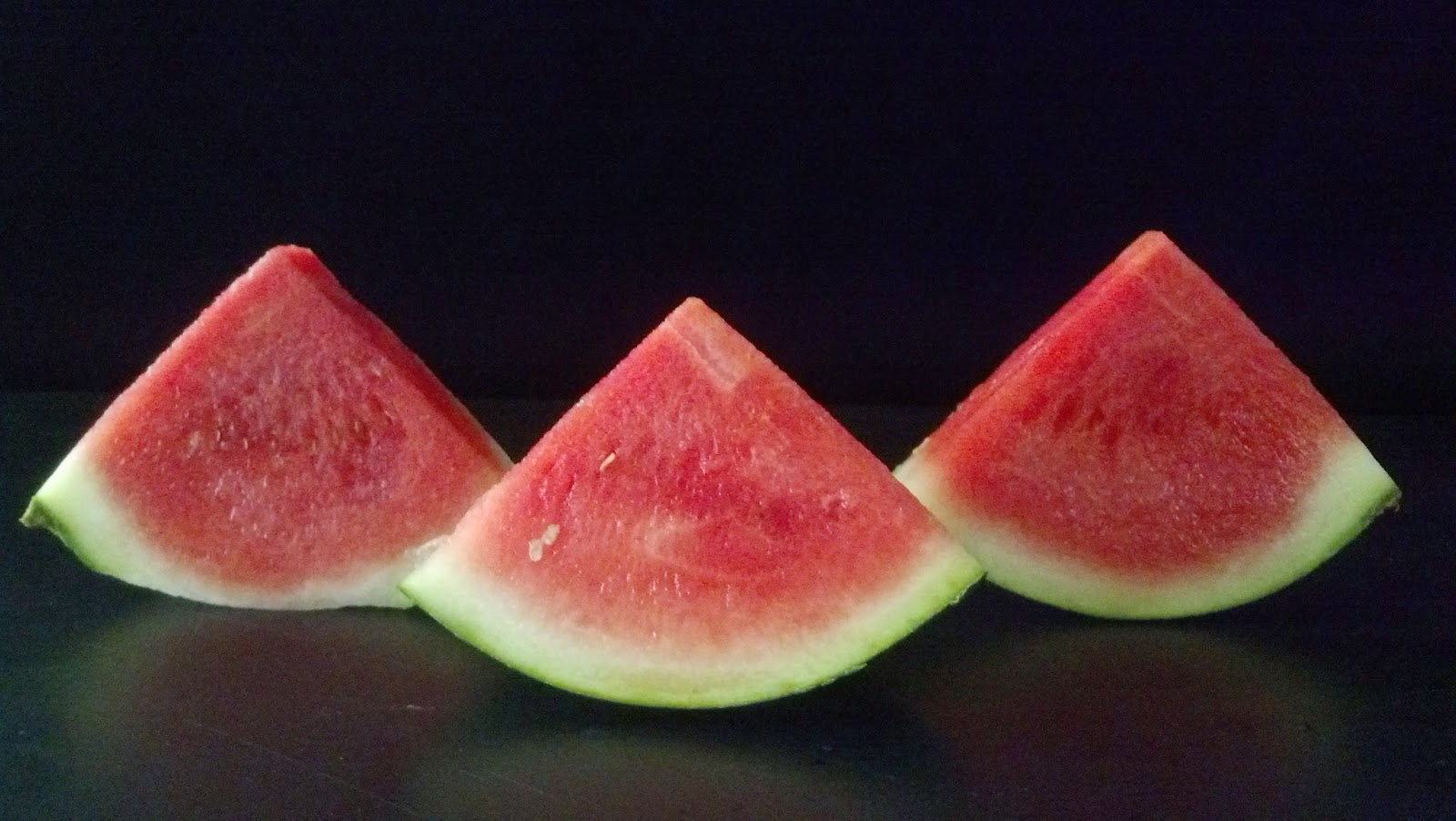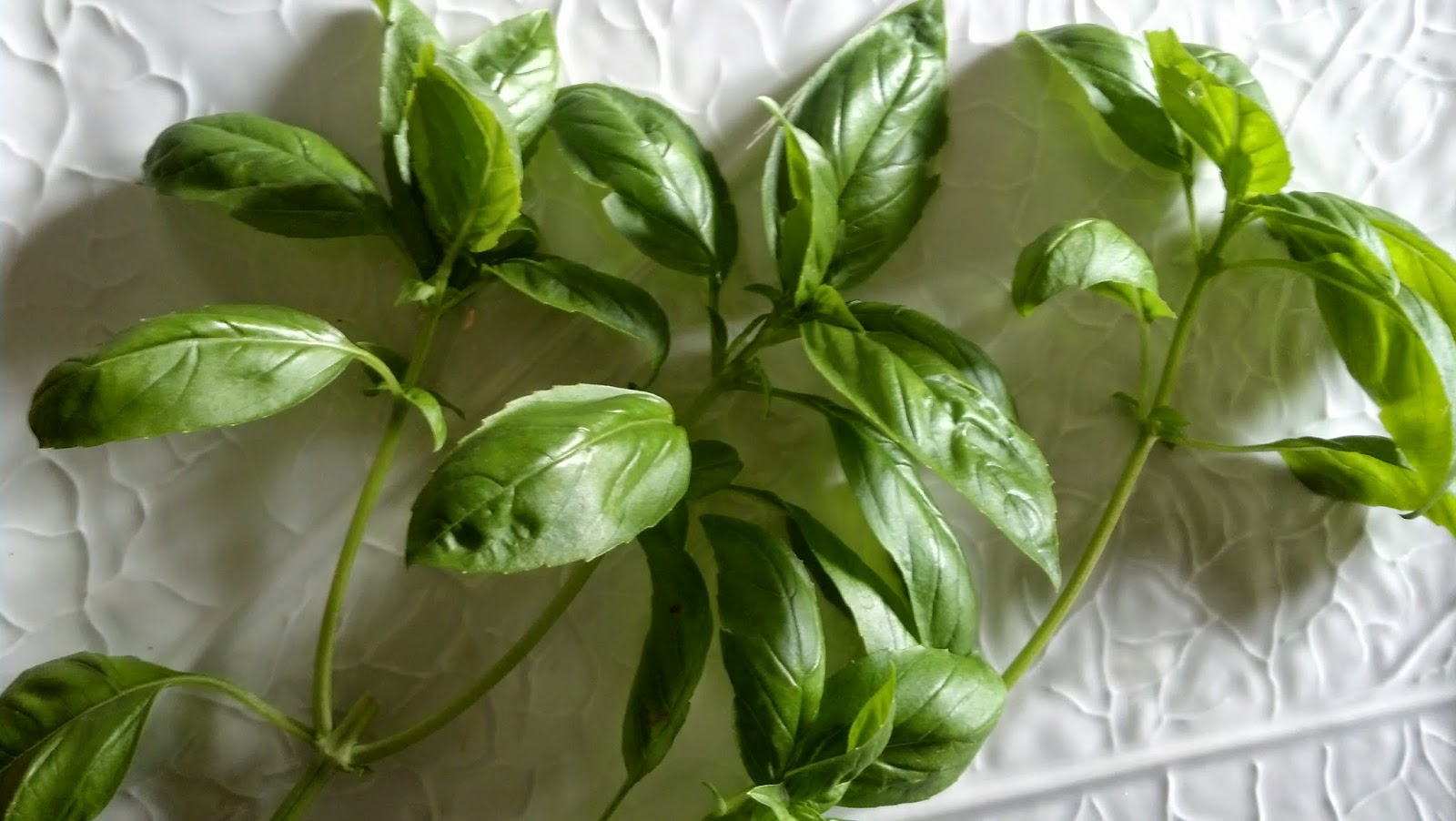One of my favorite perfect Saturday morning start scenarios is getting up early to walk through the French Market (aka Farmer's Market), seeking out some of my favorite vendors, and being able to buy some of the freshly harvested fruits and vegetables of the season. This past weekend, fresh strawberries from Michigan, some beautiful English cucumbers, a baguette, a loaf of raisin pecan bread, a dozen eggs, baby heirloom tomatoes, Jalapeño peppers, and a bunch of cilantro all made it into my favorite oversized market bag (a find from Martha's Vineyard). There was also a beautiful piece of pottery that managed to find its' way into my bag.
Everything that went into the bag was rather predicable, with two exceptions: the Jalapeño peppers and the cilantro. For quite awhile now I have insisted I am not a big fan of the flavors of either of them. However, like they say, be careful about how strongly you frame an opinion, as it may be susceptible to being revisited. Skewing to the other end of the like/dislike food continuum, I think I may have just become a big fan of Jalapeño peppers and cilantro. In matters of foods there is no true middle ground, no absolute neutral position to be taken, it is a more black/white than gray world (okay, this might be on the strong side of opinions).

So here's the thing about this tale of two salsas. I had given myself an hour to make and photograph both the Mango Jalapeño Salsa and the Strawberry Jalapeño Salsa. Time was getting away from me, my ability to multii-task was pushed well beyond its' limits, and my unfamiliarity with cutting a mango had me a little unsettled. The good news is that I finished making both salsas in time for dinner. The not so good news was that I didn't capture as many photos as I would have liked.

The Mango Jalapeño Salsa and the Strawberry Jalapeño Salsa share many of the same ingredients, yet they each had their own distinct sweet/savory flavors. The combination of the champagne mango and the Jalapeño pepper created a wonderfully sweet, mildly hot Mango Jalapeño Salsa. All of the flavors from the strawberries and other ingredients came through in each bite of the Strawberry Jalapeño Salsa, however, the use of a whole Jalapeño (without the seeds) created more heat than I thought it would have. Next time (and there will be a next time) I might only use half of the Jalapeño pepper, pay attention to its' characteristics, or use the whole Jalapeño pepper if I know a salsa with 'heat' is one everyone at the table would enjoy.

We all know that we are taking some risks when we make assumptions. Had I watched the
Whole Foods video on how to cut a mango, I wouldn't have completely destroyed one of them in the process of making the Mango Jalapeño Salsa (and I wouldn't have been so mad at myself for going into something having made an assumption). As hard as it may be to believe, up until now I have never cut a whole fresh mango. Amazingly the 'king of all fruits' have never found their way into my shopping cart or refrigerator (the mango in Noosa's Mango yoghurt doesn't count).
For the Mango Jalapeño Salsa I used a ripe Champagne or Ataulfo mango. It has a rich, sweet flavor; a beautiful deep yellow color; buttery flesh not as fibrous as other mangoes; and, adds a bit of tanginess to this savory salsa. With my rather limited mango eating experiences, I can't say how it might compare to other mangoes. If you cannot find a Champagne mango, choose a variety you know to be on the sweeter/tangier side when making this salsa.
In addition to the diced Champagne mango, the other ingredients in the Mango Jalapeño Salsa were a diced english cucumber (unpeeled), diced red onion, diced Jalapeño pepper, chopped cilantro, fresh lime juice, and some freshly ground pepper. I served it with two kinds of tortilla chips, but I could have just as easily eaten it off a spoon.
Salsas are pretty versatile and this one is no exception. The Mango Jalapeño Salsa would be a great on fish tacos or grilled fish.
After making both salsas I am pretty certain I will no longer be so dismissive of recipes or dishes containing cilantro, Jalapeño peppers, and/or mangoes any more. Having finally learned how to cut a mango (yippee), I thought I should probably add to my Jalapeño peppers knowledge base. Operating with a little bit of information might help me figure out why the Strawberry Jalapeño Salsa ended up being 'hotter' than the Mango Salsa when there wasn't a significant difference in the ingredients between them (neither one of them had the seeds from the peppers mixed in).

Turns out can Jalapeño peppers do have varying levels of heat. Factors affecting the heat level are their age (the older the hotter); their color (the heat index goes up as they change from green to red); and, their texture (the smoother, the milder). And at least now I have a better understanding why the Strawberry Jalapeño Salsa had a significant amount more 'heat' than the Mango Jalapeño Salsa. The next time I am at the French Market or the grocery store, I will be paying a little more attention to the peppers I am putting into the bag.
In case you need a reason to make a pitcher of margaritas or buy your favorite beer, I have two of them for you: Mango Jalapeño Salsa and the Strawberry Jalapeño Salsa
Recipes
Mango Jalapeño Salsa
Strawberry Jalapeño Salsa
(source of inspiration was the mango salsa recipe created by Ellie Krieger)
Ingredients
Mango Jalapeño Salsa
1 cup diced champagne mango (or other variety of mango if not available)
1 cup diced, unpeeled English cucumber
1/3 cup diced red onion
1/4 cup chopped cilantro
1 small Jalapeño pepper, seeded and diced
Juice from one lime
Freshly ground pepper
Strawberry Jalapeño Salsa
18-20 strawberries, diced
1 cup diced, unpeeled English cucumber
1/3 cup diced red onion
2 Tablespoons chopped cilantro
1/2 small Jalapeño pepper, seeded and diced (or 1 whole small Jalapeño pepper if you like heat in your salsa)
Juice from one lime
Freshly ground pepper
Tortilla Chips
Directions
Mango Jalapeño Salsa
1. Combine all ingredients.
2. Serve with your favorite tortilla chips or as a side to grilled fish.
Note: Can be prepared several hours ahead to ensure the flavors come together.
Cutting the mango: To dice a mango, cut down the broad side of the fruit, slightly off center, from the stem end to the tip end. The knife should slide down against the flat side of the pit/spine. Repeat on the other side, cutting as close to the pit/spine as possible. Cut the flesh from the sides of the pit/spine, following its' curve. Lay each half on your cutting surface and score with the tip of a knife in a crosshatch pattern, down to but not through the skin. Life the mango half, and press the skin with your thumbs to turn it inside out. Little cubes of mango will pop out on the other side. Cut them into the size dice you need.
Strawberry Jalapeño Salsa
1. Combine all ingredients.
2. Serve with your favorite tortilla chips
Note: Can be prepared 1-2 hours ahead to allow flavors to come together.

There might actually be a reason why I have intentionally avoided making and serving most foods falling in the hot and/or spicy category. Years ago I participated in a charity golf outing. I was not then and am still not now a golfer. Even though this outing was organized as a scrambler (meaning my golf inability didn't matter as much), I wanted to make a contribution to the foursome I was on (fearing my lack of golf abilities were destined to prevent us from having any remote chance of having a respectable final team score). My idea of a contribution was to pack everyone a lunch of beef tenderloin sandwiches (thinking this would be a better option than the golf clubhouse ham or turkey sandwiches being served), a couple of sides, and some roasted cashews. I was feeling pretty good about the lunch (and the baggies containing a wet, semi-frozen washcloth) and feeling, like at the end of the golf outing, they wouldn't really care if we came in in last place.
The roasted cashews were made with Chinese Five Spice Powder. If I had to describe them, I would characterize them as a 'tad' on the hot and spicy side. Everyone else's version would describe them very, very, very differently. Now, there wasn't actually anything wrong with these hot and spicy roasted cashews. Except for the fact they were served on a sunny day in August where temperatures reached the mid-90s and the only breeze to be found on the golf course came when someone swung their golf club. Had I not made the beef tenderloin sandwiches and put together baggies with icy cold washcloths, I am pretty certain the golf cart would have taken off without me, leaving me somewhere in the middle of the golf course without a course map. And the only reason they didn't care where we placed at the end of this golf outing was that they were just happy to be alive at the end of it.
































.jpg)
















